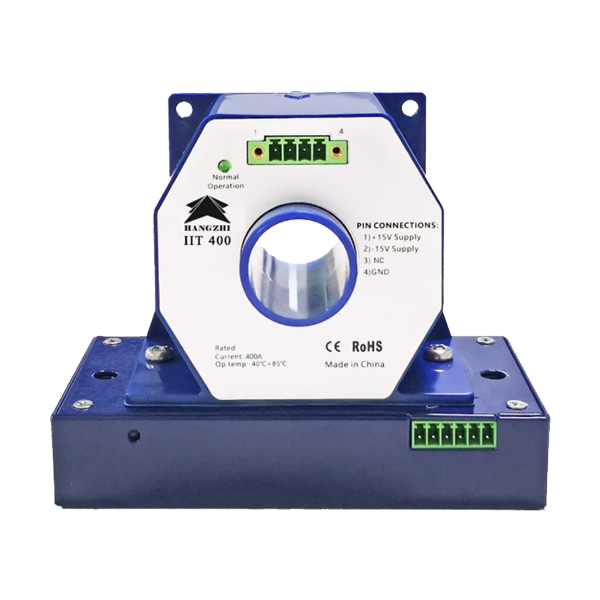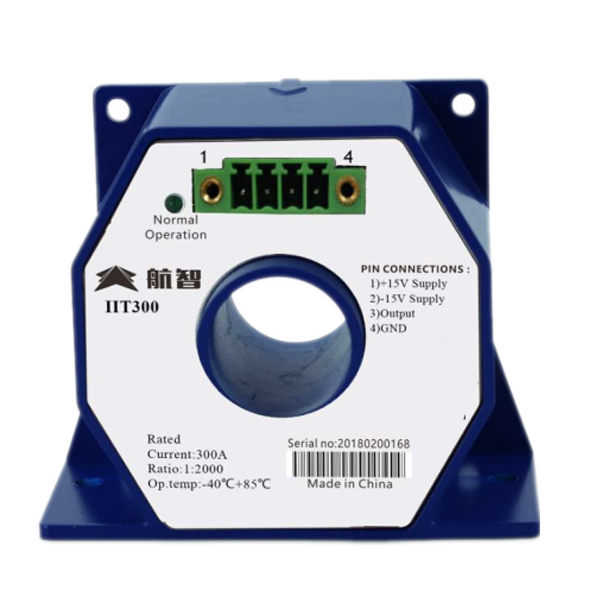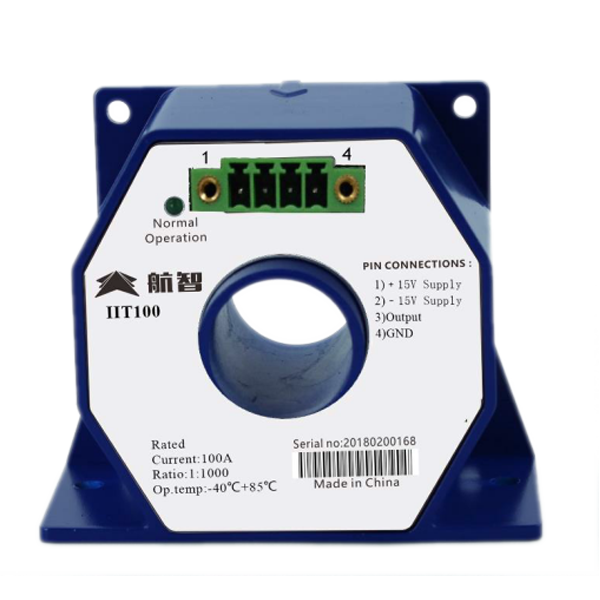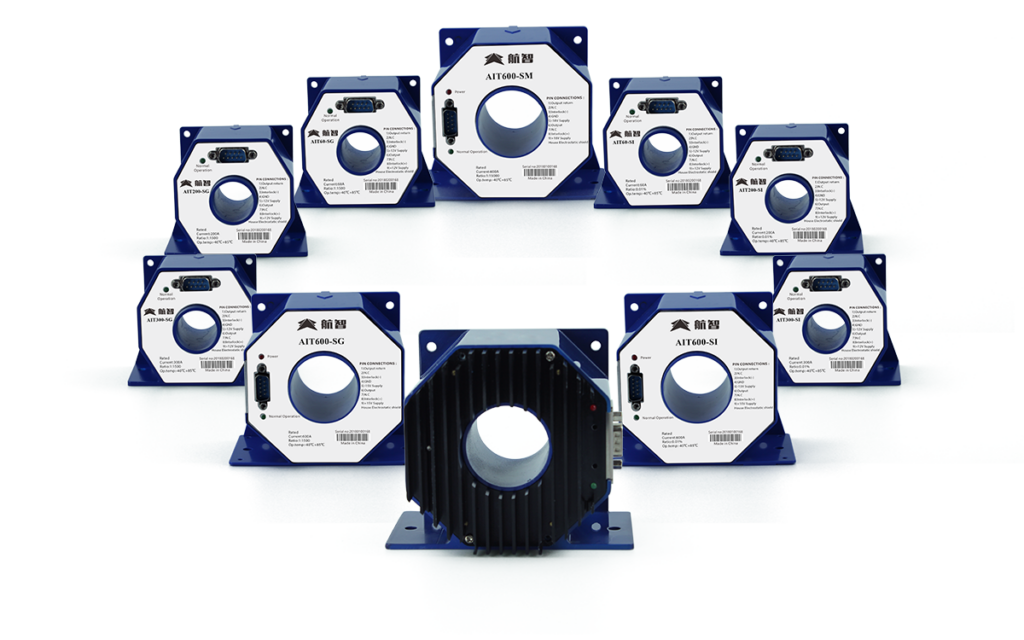
Current sensors play a key role in the rapidly evolving world of industrial automation and efficiency. These devices are essential for monitoring and controlling electrical systems, ensuring optimal performance and reducing energy consumption. Industries can significantly improve operational efficiency, cost savings, and sustainability. This article post explores how current sensors contribute to enhancing industrial efficiency.
What Does A Current Sensor Do?
. przetwornik prądu is an electrical device that measures or converts an electrical current for monitoring or control purposes. A current transducer does the following:
Current Measurement: A current transducer’s principal duty is to properly measure the magnitude of an electrical current flowing through a conductor. This current might be either alternating current (AC) or direct current (DC).
Izolacja: Electrical isolation is frequently provided by current transducers between the input current and the output signal. This isolation is critical for safety and preventing interference between various components of an electrical system.
Signal Conversion: Current transducers frequently convert measured current into a proportionate output signal, which is typically in the form of voltage or current. This conversion facilitates communication with other electronic devices such as microcontrollers, PLCs (Programmable Logic Controllers), and data acquisition systems.
Amplification: Some current transducers may amplify the current signal in order to generate a more powerful and easily measured output. In certain applications, this amplification can help enhance the precision of current measurement. For the RIT leakage current sensor może przekształcić prąd za pomocą mini amperów na napięcie 1 lub 2 V, które można zmierzyć przez sterownik PLC lub mikrokontrolery.
Przetworniki prądowe mogą mieć różne rodzaje wyjść, takie jak wyjście napięciowe (na przykład wyjściowy przetwornik prądowy 0-10 V), wyjście prądowe, wyjście częstotliwościowe lub cyfrowe protokoły komunikacyjne (na przykład przetwornik prądowy 4-20 mA lub Modbus). Używany typ wyjścia zależy od unikalnych potrzeb aplikacji.
Accuracy and Sensitivity: Current transducers are built to deliver precise measurements within a given range. To match the intended current range, they frequently include adjustable sensitivity or gain settings.
Hangzhi current transducers include protective mechanisms to defend against overcurrent circumstances and other electrical issues.

Types of Industrial Current Sensors
There are many types of current sensors used in industrial applications, including:
Current transformers
These sensors use induction and the natural magnetic field to measure current. They are commonly used in industrial environments.
Shunt resistors
These resistors have a precise, low resistance and are used to measure current by measuring the voltage drop across them.
Cewki Rogowskiego
These sensors use a flexible coil wrapped around a current-carrying conductor to measure alternating current. They are used for measuring high-speed current transients, pulsed currents, or 50/60 Hz line power.
These sensors are reliable and sensitive, and can measure a few milliamperes of direct current. They are often used for battery monitors.
These sensors produce a Hall voltage when the magnetic flux density around them is above a threshold. They are well-suited for current sensing applications.
These sensors can be clamped onto existing electrical wiring to measure the current passing through.
Current sensors are also known as current transducers or current sense transformers. They can be used in a variety of applications, such as controlling the electrical parameters of a locomotive engine or measuring the state of charge of an electric car battery.

How Current Sensors Enhance Industrial Efficiency?
Current sensors contribute to the improvement of energy efficiency in industrial processes in several ways:
Real-Time Monitoring and Control:
Current sensors provide real-time data on the current flowing through electrical systems. This allows for immediate detection of anomalies and adjustments to be made promptly, ensuring optimal performance and preventing potential failures. By continuously monitoring current levels, these sensors can detect overloads and potential short circuits, thereby preventing damage to equipment and ensuring the safety of the system and personnel.
Energy Consumption Analysis:
Sensors can monitor energy consumption in manufacturing processes, analyzing energy usage patterns. This allows manufacturers to identify inefficient operations and make necessary adjustments to reduce energy consumption. This is particularly important in industries where energy costs are a significant part of the operational expenses.
Optimized Power Management:
In applications such as electric vehicles and industrial drives, current sensors are crucial for managing power efficiently. They help in balancing the load and ensuring that power is distributed optimally across different components. This leads to reduced energy waste and improved overall efficiency.
Predictive Maintenance:
Wireless current sensors enable remote monitoring of machine performance, allowing for predictive maintenance. By identifying potential issues before they lead to failures, these sensors help in reducing downtime and maintaining consistent energy efficiency.
Thermal Management:
By monitoring current, sensors can help in managing the thermal load on electrical systems, preventing overheating and extending the lifespan of components. This, in turn, reduces the need for frequent replacements and maintenance, leading to lower energy consumption and costs.
Integration with Industrial IoT:
Current sensors can be integrated with Industrial IoT solutions, providing data that can be analyzed to optimize processes further. This integration allows for smarter, more efficient industrial operations, reducing energy waste and improving overall efficiency.
Low-Power Operation:
Some current sensors, such as those using Hall effect technology, have low power consumption characteristics. This means they can effectively lower the overall energy consumption of the system, contributing to improved energy efficiency.
In summary, current sensors enhance energy efficiency in industrial processes by providing real-time data, analyzing energy consumption patterns, optimizing power management, enabling predictive maintenance, managing thermal loads, integrating with IoT, and operating with low power consumption.

How Do I Choose a Current Sensor for Industrial Needs?
The following factors should be considered when selecting a current sensor suitable for industrial needs.
Understand Your Application Requirements
Przed wyborem przetwornika należy wiedzieć, do czego jest on potrzebny, np. rodzaj prądu (AC lub DC), zakres mierzonych wartości prądu i wymagana dokładność.
Consider Right Measurement Range
Czujniki prądu mają określony zakres prądu i mogą mierzyć z wysoką precyzją; zakres ten nazywany jest zakresem pomiarowym. Wybór czujników z odpowiednim zakresem pomiarowym ma kluczowe znaczenie. Jeśli zakres jest zbyt wysoki, istnieje ryzyko przeciążenia czujnika, a jeśli zakres jest zbyt niski, nie można zmierzyć całego zakresu prądu. Kluczowa jest również rozdzielczość czujnika lub minimalna zmiana prądu, którą może wykryć.
Care About the Sensor’s Accuracy and Linearity
Dokładność i liniowość są równie ważnymi parametrami przetwornika. Dokładność oznacza, jak ściśle odczyty odpowiadają rzeczywistym wartościom, natomiast liniowość czujnika oznacza jego zdolność do zachowania stałej czułości w całym zakresie pomiarowym. Aby zagwarantować precyzyjne i wiarygodne odczyty, należy użyć czujnika o dobrej dokładności i liniowości.
High-precision transducers should have low error rates and provide consistent, reliable readings. Hangzhi IIT industrial current sensor products have high accuracy, linearity & stability, and low temperature drift and zero drift features, and are providing services to our customers with the top performance and effective cost.
Consider Response Time
Czas reakcji odnosi się do czasu wymaganego przez czujnik do zarejestrowania zmian prądu i wygenerowania odpowiednich sygnałów wyjściowych. Wybór czujnika o krótkim czasie reakcji gwarantuje precyzyjne i terminowe odczyty. Jeśli czas reakcji jest zbyt długi, czujnik lub obwód może ulec uszkodzeniu w sytuacjach, w których prąd stale się zmienia.
Evaluate Output Signal Type
Check the type of signal that the current transducer sends out. Typical output types include digital signals and analog signals (current or voltage). Verify that the transducer’s output signal is compatible with your control system or data acquisition device.
Warunki Środowiskowe, Montaż i Instalacja
Należy wziąć pod uwagę środowisko pracy, w tym zakres temperatur, wilgotność i potencjalne narażenie na chemikalia lub wibracje, i wybrać przetwornik, który może wytrzymać te warunki.
Upewnij się, że wymagania dotyczące mocowania i instalacji przetwornika są zgodne z możliwościami i ograniczeniami systemu. Izolacja jest również jednym z czynników przy wyborze czujników. Upewnij się, że przetwornik zapewnia odpowiednią izolację elektryczną dla bezpieczeństwa i zapobiegania zakłóceniom sygnału.
Check Compatibility with Existing Systems
Sprawdź kompatybilność obecnego przetwornika z istniejącymi systemami. Upewnij się, że fizyczny rozmiar przetwornika, opcje montażu i połączenia elektryczne idealnie pasują do Twojej konfiguracji.
Kompatybilność zmniejsza potrzebę dodatkowych modyfikacji i zapewnia płynną integrację. Należy sprawdzić, czy przetwornik spełnia normy i specyfikacje wymagane dla danego systemu.
Compliance, Standards and Cost
Check that the transducer meets any relevant industry standards and regulations for your application. Consider the cost of the transducer in relation to your budget and the value it provides in terms of performance and reliability.
Check Manufacturer Reputation
Przed zakupem przetwornika prądu należy dowiedzieć się, jak znana jest firma, która go wyprodukowała. Przeczytaj recenzje i poproś o rekomendacje profesjonalistów z branży. Wybierz przetwornik od renomowanego producenta z dobrą obsługą klienta i wiarygodną historią.
Boost Your Industrial Efficiency with Hangzhi Precision’s Current Sensors
Current sensors are indispensable tools in enhancing industrial efficiency. In the era of Industry 4.0, the role of current sensors is only set to grow, as they become more sophisticated and integrated into complex industrial systems. As technology advances, current sensors will continue to play a critical role in driving industrial efficiency and innovation.
Shenzhen Hangzhi Precision Electronics Co., Ltd. is a technology-leading enterprise dedicated to the research and development, production, sales and solution customization of high-precision current sensors, voltage sensors and high-precision electrical measuring instruments. We strive to build a well-known brand of precision current sensors and precision electrical measuring instruments in the DC field, and strive to develop into an internationally leading leader in precision electronics in the field of DC systems.
